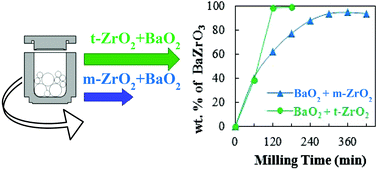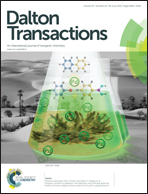Enhanced BaZrO3 mechanosynthesis by the use of metastable ZrO2 precursors
Abstract
The current work assesses the impact of structural differences between stable and metastable ZrO2 precursors on the mechanochemical preparation of BaZrO3. Monoclinic (m-ZrO2) and tetragonal (t-ZrO2) zirconia polymorphs were prepared without stabilizing additives by slow alkaline precipitation. High-energy milling of the individual ZrO2 precursors induced different partial transformations in each case. The as-synthesized m-ZrO2 powders showed partial conversion to the tetragonal polymorph on mechanical activation, reaching about 10% t-ZrO2 after 420 min accompanied by increases in strain. In contrast, the as synthesized t-ZrO2 powders underwent the inverse transformation to the monoclinic phase, producing about 50% m-ZrO2 after 120 min with the liberation of strain. The t-ZrO2 precursor was shown to exhibit the higher reactivity with barium peroxide, yielding significantly earlier formation of barium zirconate under room-temperature mechanosynthesis. The progress of the mechanochemical formation of BaZrO3 has been discussed with respect to the differing behaviour of the ZrO2 precursors upon mechanical activation and associated thermodynamic perspectives.


 Please wait while we load your content...
Please wait while we load your content...